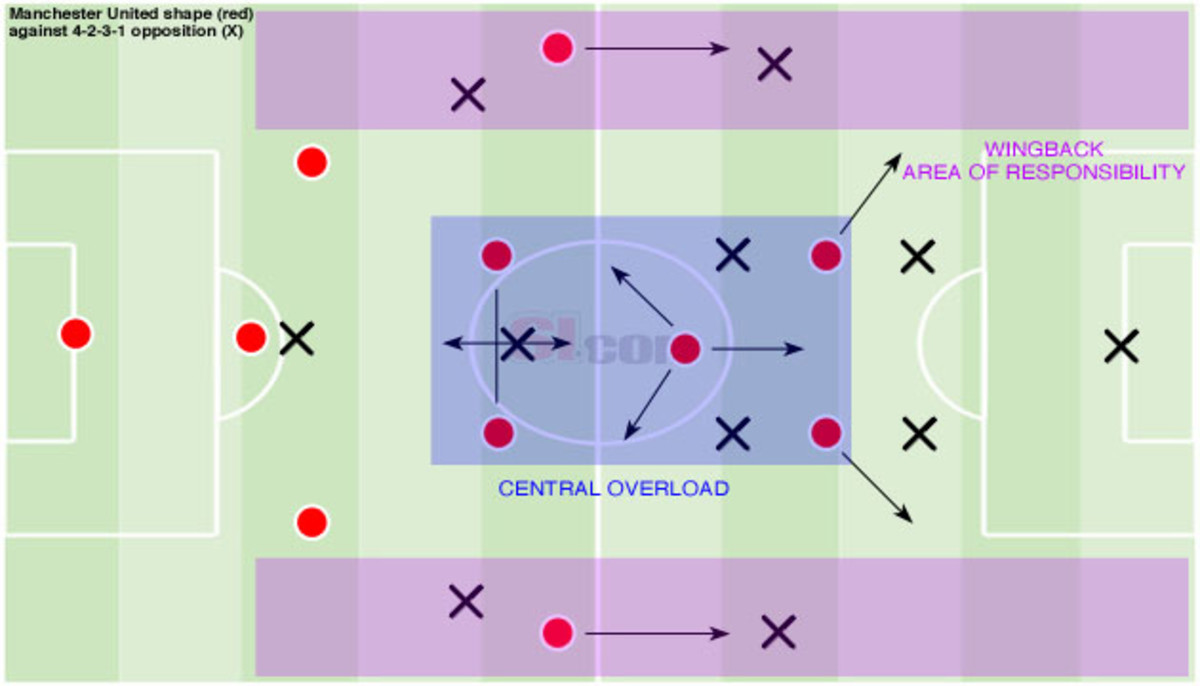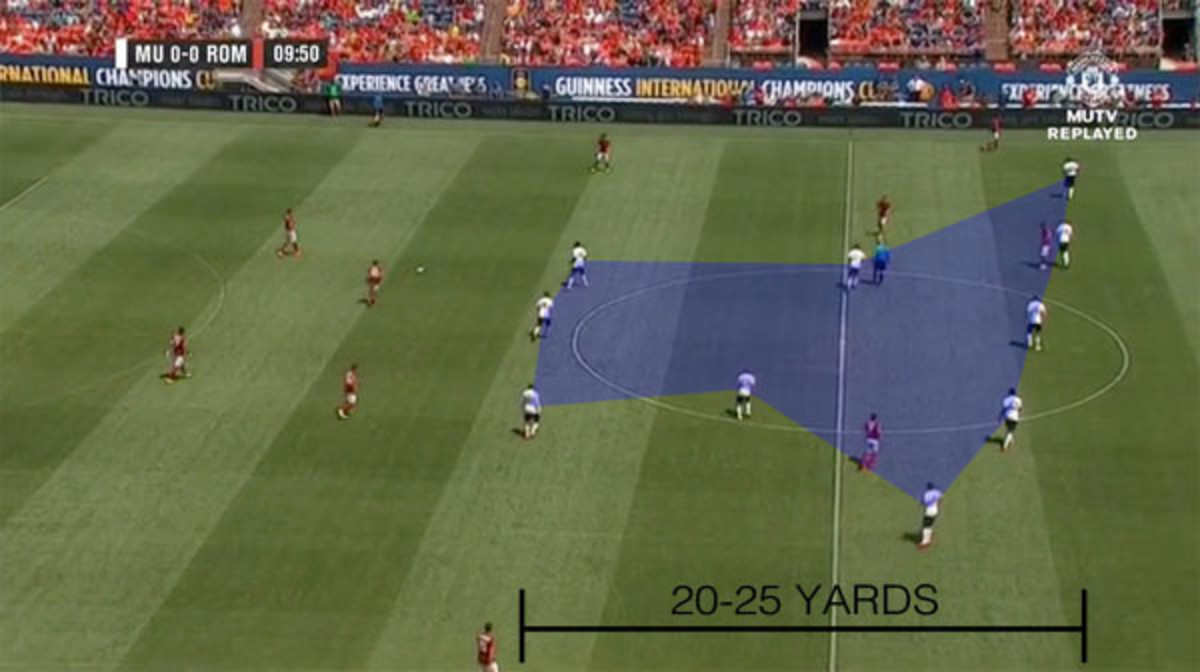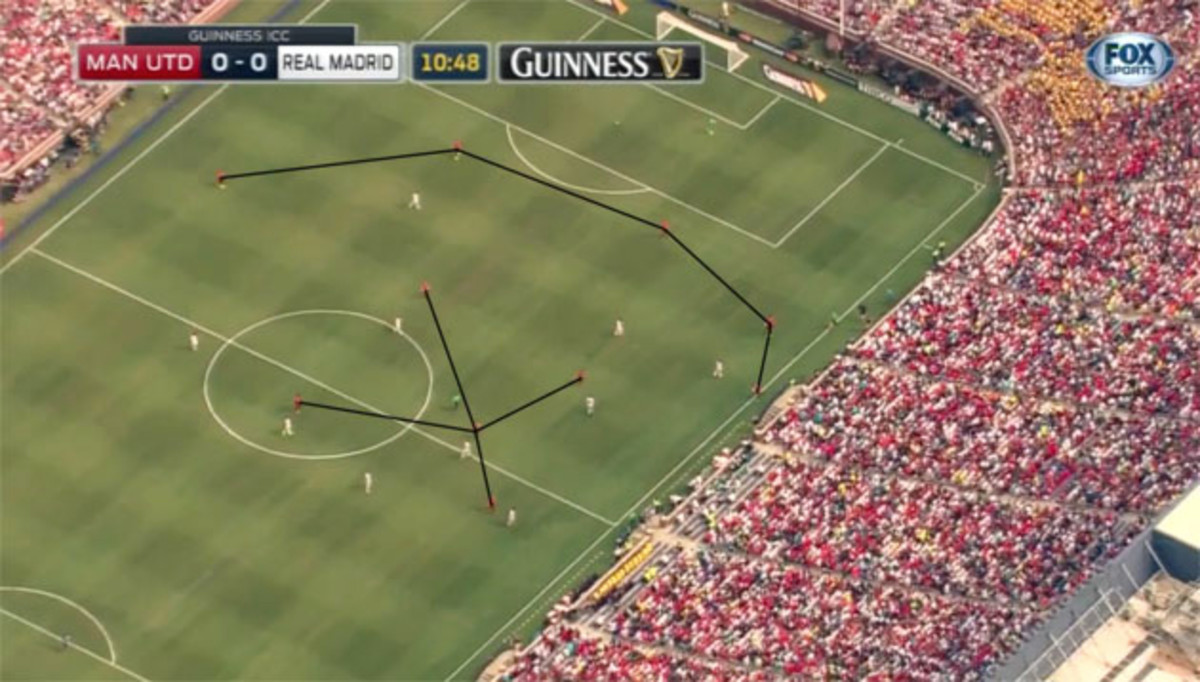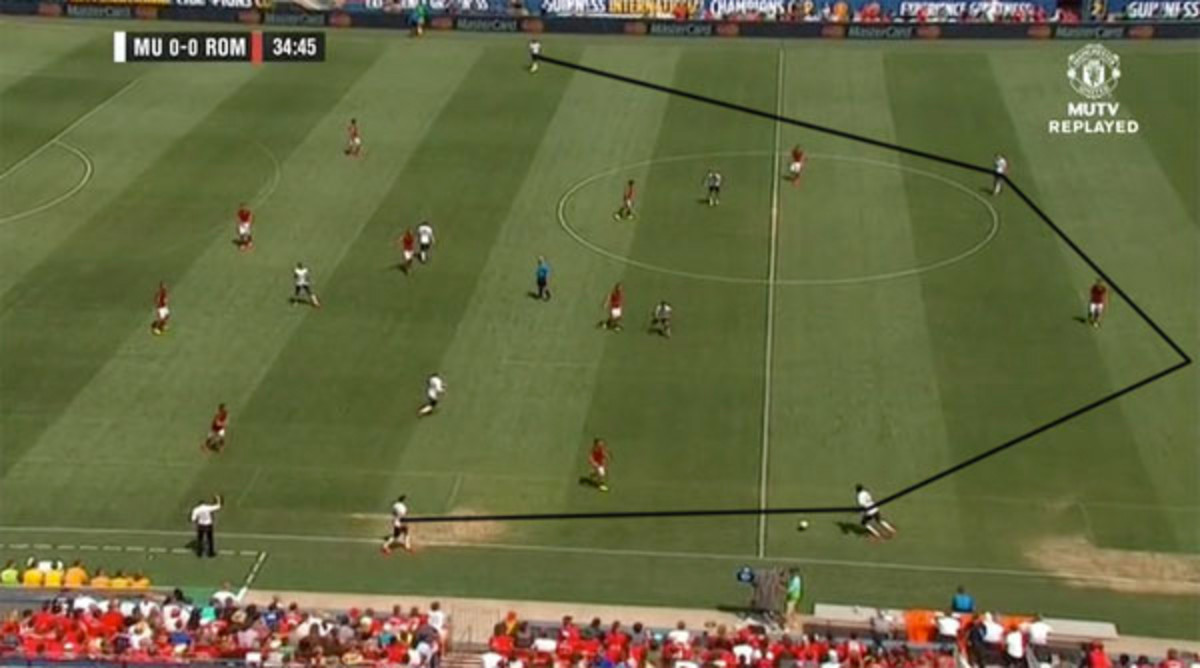Premier League Preview: Louis van Gaal's Manchester United makeover

Manchester United’s Dutch revolution is nearly complete as the 2014-15 Premier League season nears kickoff.
New manager Louis van Gaal, fresh off a third-place finish at the World Cup with his native country, has imported the same system he used in Brazil to his new club, giving it a much different look than the one David Moyes implemented to a disappointing degree in the club's first post-Sir Alex Ferguson season.

The basic shape is 3-4-3 or 5-2-3, depending on the situation. Its key components are three center backs, two rangy wingbacks, a double pivot in central midfield and a freewheeling playmaker underneath two mobile center forwards.
Van Gaal’s defensive organization anchored by those three center backs is the safety net that allows United to throw numbers forward in attack. Out of possession, the team maintains its disciplined 5-2-3 shape, narrowing the field and giving the opposition no space to play through the lines.

By holding a high defensive line as the forwards collapse into midfield, United reduces the pitch to less than 30 yards of playable vertical space. As long as goalkeeper David de Gea reads the play well and comes off his line quickly, even playing over the top becomes a difficult option in terms of timing runs through the defense and connecting with a perfectly weighted pass.
The center backs and holding midfielders work together to reduce space in the most vital area between lines, in the gap above the center backs. Ideally, the anchoring center back won’t have to mark a player but can clean up loose balls and distribute quickly. The wide center backs and central midfielders play freer on the opposition, and they’re responsible for tracking runs.
Defensive midfielders are primarily responsible for marking the attacking midfielders, although they can be passed off to the center backs. If the opposing wingers pinch in to create a central overload, though, the midfielders have to stay with their direct opponents, both to ensure 1-on-1 match-ups and to make possession more difficult in a crowded middle.
The wingbacks track opposition wingers or overlapping fullbacks, depending on the situation. These are the most-taxed players in van Gaal’s system, required to play up and down the length of the touchline. Early in United’s preseason match against Roma, they were pinned back in their own end by Roma’s active wingers, but in high-pressure situations when the opponent wants to build out of the back, they release onto the fullbacks and make that more difficult.
Finally, the playmaker stays near the opposing defensive midfielder to prevent simple distribution and be a quick outlet for the counterattack. The center forwards have little defensive responsibility beyond providing initial pressure on the opposing center backs and shaping play with their body position toward spots where United has a higher concentration of players.
Quick counterattacks through the No. 10, played by Juan Mata in preseason, were a consistent feature throughout tune-up games. The forwards, Wayne Rooney and Danny Welbeck (although Robin van Persie is Rooney’s likeliest partner once he regains fitness following an extended post-World Cup break), support to provide immediate pressure upon regaining possession.

Building out of the back, the goalkeeper nearly always plays short to one of the wide center backs. At least one of the holding midfielders shows for the ball into gaps, with the other stepping a little higher in a staggered pattern. With the center forwards and the primary playmaker, the shape normally resembles a quadrilateral with one in the middle or a wheel-and-spoke pattern around the No. 10.
The wingbacks push high and wide immediately upon regaining possession, again personifying the demand on them in this system. United newcomer Luke Shaw is expected to start on the left flank, but van Gaal questioned his fitness at the beginning of preseason and hasn’t used him much yet.
Premier League Season Preview: Life after Luis Suarez begins for Liverpool
Beyond running up and down the touchline in all phases of play with little time to catch their breath, the wingbacks must also time their runs for maximum effectiveness in the attack, working in tandem with the center forwards, who at times pull wide. Fullbacks are asked to do a lot in the modern game, and this system takes that a step further. Van Gaal’s wingbacks at the World Cup, in particular Daley Blind, showed excellent work rate, an ability to serve the correct ball from wide areas and 1-on-1 attacking and defensive abilities.
The crux of van Gaal’s desire to arrange his team this way stems from the glut of central attacking players on the United roster. Before his team’s preseason tour of the United States, van Gaal said he inherited an “unbalanced and broken” side with too many forward options; van Persie, Rooney, Welbeck, Mata, Javier Hernández, Shinji Kagawa and Adnan Januzaj can’t all play simultaneously.
At the same time, the talent in attack means van Gaal wanted to find a way to play as many of them as possible. Without a traditional, hard-nosed defensive midfielder, playing three center backs to ensure defensive cover allows all five players above the back line to have primarily attacking skill sets.
The holding block is distributor Ander Herrera’s likely starting position. Above him, Mata has a free role in the middle of five central players. He drifts as he sees fit, with the top three interchanging based on the cues Mata gives with his movement. On the counterattack, he’s the player United wants on the ball, charged with picking the right pass.
Central overload is the initial goal but with flexibility to move the ball wide at the right moments. A further benefit of wingbacks is always having an outlet to change the point of attack quickly, as the weak-side winger can always provide width. In a four-back system, that player would have to tuck in, but that need isn’t there with the safety net of three center backs.

The big diagonal ball to the opposite flank can relieve pressure and set up isolation opportunities with opposing fullbacks. When the center forwards also pull wide, that 1-on-1 can become a 2-on-1 or 2-on-2 with gaps in the middle into which others can run.
United’s system provides balance on both ends of the field. The Red Devils scored 10 goals on their U.S. tour before conceding, and although seven of those were against the LA Galaxy, United also looked comfortable in all phases against every opponent.
Although formation doesn’t dictate style of play, Van Gaal spearheaded a larger trend toward systems with three central defenders at the World Cup, where they featured more heavily than in other recent major tournaments. That trend will carry over into the club season: Barcelona seems prepared to implement it under Luis Enrique, which is why the club hit the transfer market for center backs; Pep Guardiola and Marcelo Bielsa will do the same at Bayern Munich and Marseille, respectively.
The third center back is largely a reaction to the counterattacking style that arose to balance possession-based teams that throw numbers forward, although Barça and Bayern achieved a similar effect by dropping the holding midfielder between the center backs in the build-up phase.
The Netherlands and United’s style under van Gaal is effective against those proactive and counterattacking teams, but the Dutch had some trouble against teams that sat back in the World Cup and absorbed pressure, including Australia in the group stage and Argentina in the semifinals. As he did in Brazil, van Gaal might have adapt and readily switch to 4-3-3 when that third center back becomes unnecessary against lower-quality Premier League opponents.
Still, the key to van Gaal’s wide-sweeping change at United isn’t in the players’ starting positions on the field, but rather in his overarching philosophy. The ball movement and chemistry on the first goal against Real Madrid in preseason is a perfect example of what he wants to instill:
The ball starts on the left, swings through the back and down the right flank with a series of quick combinations. The awareness and movement from every player involved in the play is a far cry from the incessant aerial balls into the penalty area under Moyes last season.
Van Gaal has a distinctly Dutch footballing philosophy underpinning his ability on the training ground to bring that style out of his players. It won’t be an easy transition, as he has said it could take up to three months for the players to properly adapt to the new system once the Premier League season starts.
Even with the initial growing pains, as United has no European competition to congest the training schedule with extra matches and travel in van Gaal’s first season, the Red Devils could run rampant through the league calendar. At the very least, fans can expect a return to a manager with strong personality and rapport with the personnel reminiscent of what made Sir Alex Ferguson such a success for the club.
